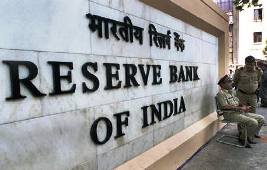 Although there have been some greenshoots on the growth front lately like a jump in merchandise exports and surge in capital inflows, Reserve Bank on Tuesday reiterated its concern over the widening current account deficit and called for efforts to reduce the gap.
Although there have been some greenshoots on the growth front lately like a jump in merchandise exports and surge in capital inflows, Reserve Bank on Tuesday reiterated its concern over the widening current account deficit and called for efforts to reduce the gap.
The central bank listed the widening CAD, which is expected to reach record levels of over 5 per cent this fiscal as one of the primary reasons which could prevent it from reducing rates further.
"Risks on account of the CAD, or the difference between inflows and outflows of foreign currency, remain significant notwithstanding likely improvement in Q4 over an expected sharp deterioration in Q3 of FY13," the RBI said in its mid-quarter monetary policy review earlier in the day.
The central bank had flagged CAD as a big concern in the third quarter policy review on January 29 as well.
While the CAD stood at 3.9 per cent in Q1, in the second quarter it shot up to a historic high of 5.4 per cent, taking the H1 CAD to 4.65 per cent of GDP. In the last fiscal, CAD had stood at 4.2 per cent.
Since exports have been contracting in Q3, without a commensurate decline in imports, the CAD for the quarter could be even higher than the second quarter.
According to experts,
reducing rates could end up incentivising imports due to higher demand, while it may also lead to an exit of capital as the difference between the interest rates in developed markets and the country narrows.
"On the external sector front, the key challenge is to reduce the CAD, which is well above the sustainable threshold," the RBI said on Tuesday.
It pointed out that even though the merchandise exports have come in the positive territory for second month running in February, the trade deficit was higher for the April- February period.
Stating that capital flows have increased, the Reserve Bank of India, which has been recommending more stable foreign direct investment route for inflows, also said, ‘financing of the CAD with stable flows remains a challenge.’
On the global economic front, the RBI said the global financial market conditions have improved since January but the economic activity has weakened. Whereas, on the commodity prices front, which have a considerable bearing on the CAD, the prices of non-fuel items have softened but the fuel prices have remained firm.
Today's policy also identified high CAD as limiting its scope for more easing.
According to RBS analyst Sanjay Mathur, for an aggressive easing cycle to fall in place, CAD will need to stabilise at 2.5-3 per cent of gross domestic product.
© Copyright 2024 PTI. All rights reserved. Republication or redistribution of PTI content, including by framing or similar means, is expressly prohibited without the prior written consent.

 Although there have been some greenshoots on the growth front lately like a jump in merchandise exports and surge in capital inflows, Reserve Bank on Tuesday reiterated its concern over the widening current account deficit and called for efforts to reduce the gap.
Although there have been some greenshoots on the growth front lately like a jump in merchandise exports and surge in capital inflows, Reserve Bank on Tuesday reiterated its concern over the widening current account deficit and called for efforts to reduce the gap.